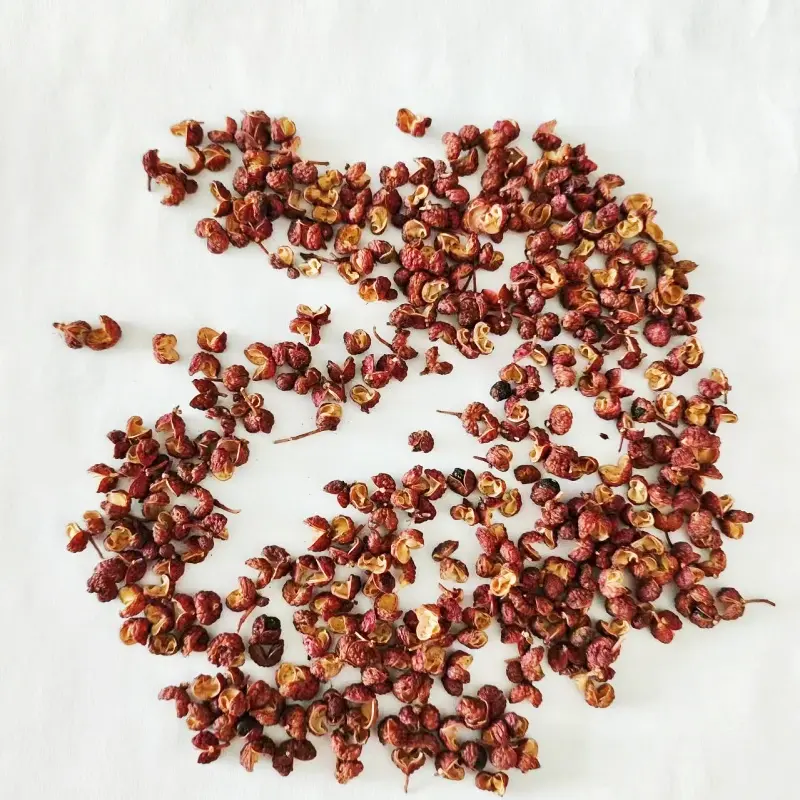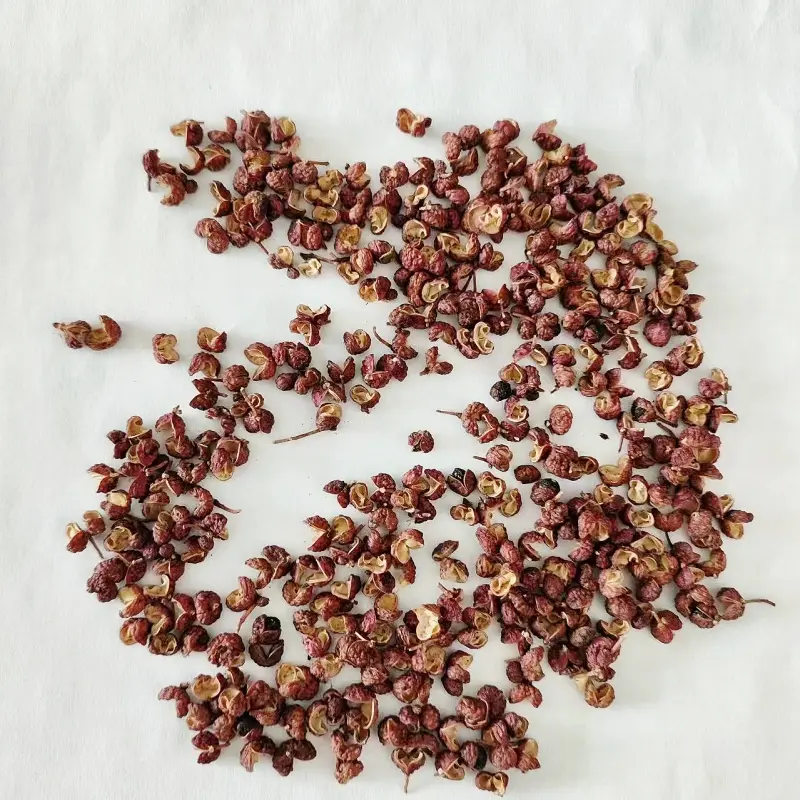Growing Chinese Sichuan Red Peppercorn
Sichuan red peppercorn, known for its unique flavor and numbing sensation, is a staple in Sichuan cuisine. This aromatic spice has gained popularity not only in China but also worldwide, thanks to its distinctive taste and health benefits. In this article, we will explore the cultivation process of Sichuan red peppercorn, its benefits, and how Weifang Manna Foods Co., Ltd. can supply high-quality Sichuan peppercorns to meet your culinary needs.
Understanding Sichuan Red Peppercorn
What is Sichuan Red Peppercorn?
Sichuan red peppercorn, often mistaken for black pepper, is not a true pepper but rather the dried husk of the prickly ash tree (Zanthoxylum spp.). It imparts a unique flavor characterized by its citrusy notes and tingling numbness, known as "mala" in Chinese, which translates to "numbing and spicy." This spice is an essential ingredient in many traditional Sichuan dishes, enhancing flavors and adding depth to sauces, stir-fries, and marinades.
Nutritional Benefits
Sichuan red peppercorn is not only a flavor enhancer but also offers several health benefits. It is rich in antioxidants, vitamins, and minerals, contributing to digestive health and potentially aiding in weight management. The spice is known for its anti-inflammatory properties and can help improve circulation. Including Sichuan red peppercorn in your diet can provide both flavor and nutritional advantages.
Cultivation of Sichuan Red Peppercorn
Growing Sichuan red peppercorn requires careful attention to various factors, including climate, soil, and cultivation techniques. Below, we outline the essential steps for successfully growing this unique spice.
1. Climate Requirements
Sichuan red peppercorn thrives in a warm, temperate climate. It requires a minimum temperature of around 10°C (50°F) and can tolerate temperatures up to 30°C (86°F). The best growing conditions include:
Full Sun: Sichuan peppercorn plants require full sunlight for optimal growth.
Moderate Rainfall: While they prefer well-drained soil, these plants need regular rainfall, approximately 600-1,200 mm annually.
2. Soil Preparation
The quality of the soil is crucial for successful cultivation. Sichuan red peppercorn grows best in:
Well-Drained Soil: Sandy loam or loamy soil with good drainage helps prevent root rot.
pH Levels: A slightly acidic to neutral pH (around 6.0 to 7.0) is ideal for optimal nutrient absorption.
Before planting, it's essential to prepare the soil by tilling and adding organic matter such as compost to improve fertility.
3. Planting Techniques
Sichuan peppercorn is typically propagated from seeds or seedlings. Here’s a step-by-step guide to planting:
Seed Selection: Choose high-quality seeds from reputable suppliers. For best results, seeds should be soaked in water for 24 hours before planting.
Planting Depth: Seeds should be sown at a depth of 1-2 cm (0.4-0.8 inches).
Spacing: Allow adequate spacing of about 1-2 meters (3-6 feet) between plants to ensure proper airflow and sunlight exposure.
4. Watering and Fertilization
Proper watering and fertilization are key to healthy growth:
Watering: Regular watering is essential, especially during dry spells. Avoid waterlogging, as this can lead to root diseases.
Fertilization: Apply a balanced fertilizer (NPK) during the growing season to promote healthy growth and fruit development.
5. Pest and Disease Management
Maintaining plant health is critical for a successful harvest. Common pests that affect Sichuan red peppercorn include aphids and spider mites. Employ integrated pest management (IPM) techniques, such as:
Regular Monitoring: Check plants regularly for signs of pests and diseases.
Natural Predators: Introduce beneficial insects that feed on common pests.
Organic Pesticides: Use organic solutions to control infestations, minimizing chemical use.
6. Harvesting
Sichuan red peppercorn is typically harvested in late summer to early autumn when the husks turn a vibrant red color. Here’s how to harvest:
Timing: Harvest when about 70% of the fruits are ripe.
Technique: Gently twist or cut the clusters from the branches, being careful not to damage the plant.
7. Post-Harvest Processing
Once harvested, the peppercorns need to be processed to enhance flavor and shelf life. Follow these steps:
Cleaning: Remove any debris or leaves from the harvested peppercorns.
Drying: Spread the peppercorns in a single layer under the sun or in a dehydrator until they are fully dry.
Storage: Store dried Sichuan peppercorns in an airtight container in a cool, dark place to preserve freshness.
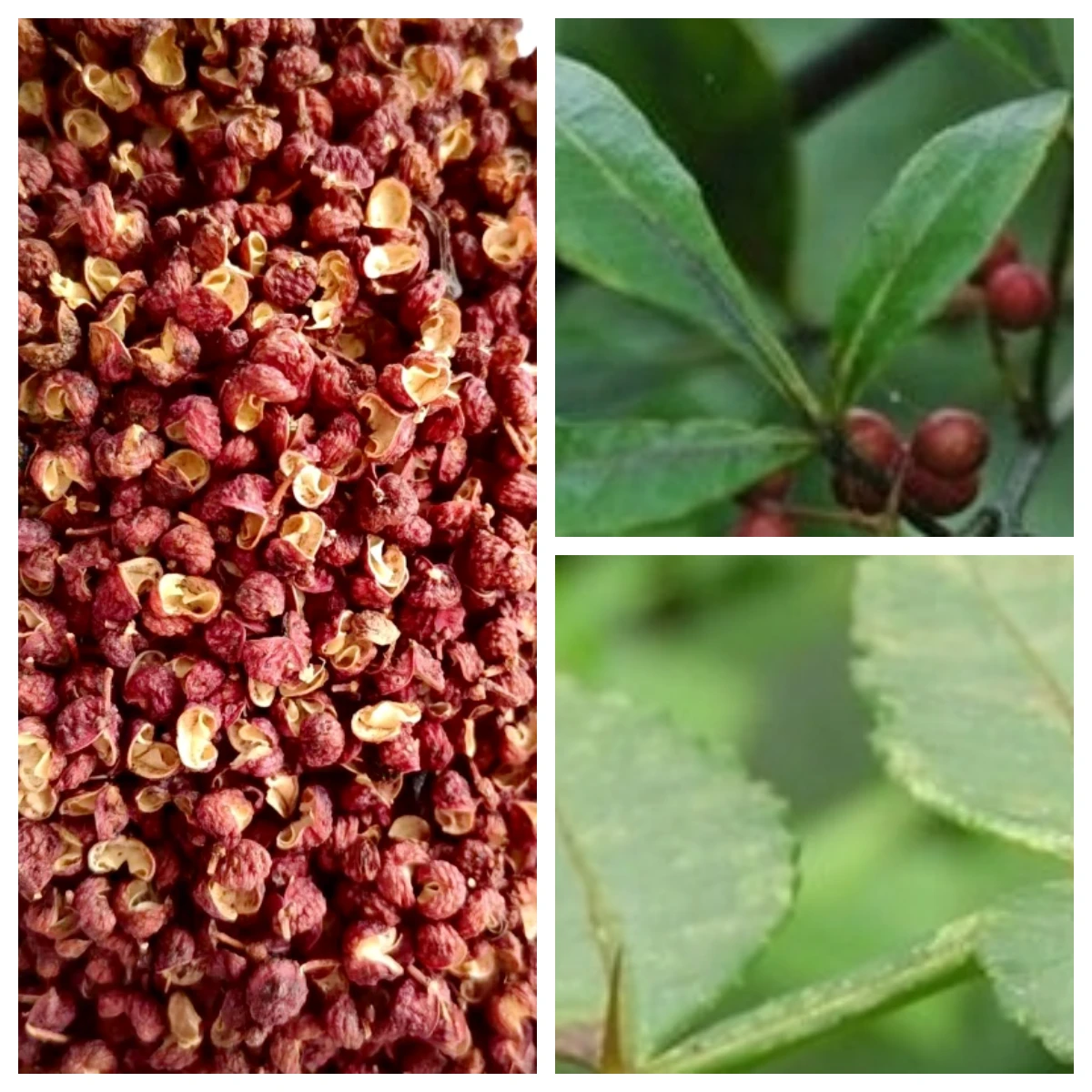
The Culinary Use of Sichuan Red Peppercorn
1. Flavor Profile
Sichuan red peppercorn is celebrated for its unique flavor profile. The combination of citrusy notes with a numbing sensation makes it a versatile spice that can enhance various dishes. It is commonly used in:
Sichuan Hot Pot: The spice is essential in creating the aromatic broth that defines this popular dish.
Mapo Tofu: A classic Sichuan dish where the peppercorn adds depth and complexity to the sauce.
Stir-Fries and Marinades: Its unique flavor elevates the taste of stir-fried vegetables and meats, providing a signature zing.
2. Recipes Featuring Sichuan Red Peppercorn
Sichuan Red Peppercorn Oil: Infuse oil with crushed Sichuan red peppercorns and use it as a condiment or cooking oil for an added kick.
Spicy Noodles: Toss noodles with a sauce made from Sichuan red peppercorn oil, soy sauce, and garlic for a quick, flavorful meal.
Dumpling Filling: Incorporate crushed Sichuan red peppercorns into the filling for dumplings to enhance the overall flavor.
3. Pairing with Other Ingredients
Sichuan red peppercorn pairs beautifully with a variety of ingredients, including:
Garlic and Ginger: These aromatics complement the spice's flavor and enhance its overall aroma.
Chili Peppers: For those who enjoy heat, combining Sichuan red peppercorn with other chili peppers creates a complex flavor profile.
Citrus: The natural citrusy notes in Sichuan red peppercorn work well with lemon or lime, making them great additions to marinades and dressings.
The Economic Importance of Sichuan Red Peppercorn
1. Market Demand
The demand for Sichuan red peppercorn has been steadily increasing, particularly in international markets. As global interest in Asian cuisine grows, the spice's unique flavor profile and culinary versatility have made it a sought-after ingredient in restaurants and households alike.
2. Export Opportunities
For producers and exporters, Sichuan red peppercorn presents significant opportunities for growth. Key factors include:
Global Reach: Weifang Manna Foods Co., Ltd. has established itself as a reliable supplier, exporting to markets in the United States, Japan, Canada, Europe, and the Middle East.
Diversified Product Range: By offering various types of Sichuan peppercorns and spices, companies can cater to diverse customer preferences and expand their market reach.
3. Supporting Local Farmers
Growing Sichuan red peppercorn can provide economic benefits to local farmers in regions where the spice is cultivated. By supporting sustainable farming practices, companies can contribute to the livelihoods of farmers and promote environmentally friendly agricultural methods.
Challenges in Sichuan Red Peppercorn Cultivation
1. Climate Variability
Climate change poses significant challenges to agricultural practices, including Sichuan red peppercorn cultivation. Unpredictable weather patterns, such as extreme temperatures and erratic rainfall, can adversely affect crop yields.
2. Pest Management
As global temperatures rise, the incidence of pests and diseases may increase, posing risks to Sichuan red peppercorn crops. Farmers must adapt their pest management strategies to protect their plants and ensure healthy harvests.
3. Market Competition
The global spice market is competitive, with many suppliers vying for attention. To stand out, producers must focus on quality, sustainability, and unique selling propositions that resonate with customers.
Health Benefits of Eating Red Sichuan Peppercorns
Sichuan red peppercorn, known for its unique flavor and numbing sensation, also offers numerous health benefits. This spice is rich in antioxidants, vitamins, and minerals, which contribute to various aspects of health. Here’s a closer look at some of its key health benefits:
1. Rich in Antioxidants
Sichuan red peppercorn contains various antioxidants, which play a vital role in neutralizing free radicals in the body. Free radicals are unstable molecules that can cause oxidative stress, leading to chronic diseases such as cancer, heart disease, and diabetes. Research has shown that diets rich in antioxidants can help reduce the risk of these diseases.
For instance, a study published in the Journal of Agricultural and Food Chemistry found that spices like Sichuan peppercorn contain polyphenolic compounds that exhibit strong antioxidant activity. Incorporating Sichuan red peppercorn into your diet can be an effective way to enhance your overall antioxidant intake.
2. Digestive Health
Sichuan red peppercorn has been traditionally used in Chinese medicine to support digestive health. It stimulates the production of digestive enzymes, which can help improve digestion and nutrient absorption. Additionally, the spice has carminative properties, meaning it can help relieve gas and bloating.
A study conducted in the Journal of Ethnopharmacology explored the effects of various spices on digestive health. The researchers found that Sichuan peppercorn promotes gastrointestinal motility and enhances digestive enzyme activity. Including this spice in your meals may lead to improved digestion and a reduction in gastrointestinal discomfort.
3. Anti-Inflammatory Properties
Chronic inflammation is linked to numerous health issues, including heart disease, arthritis, and autoimmune disorders. Sichuan red peppercorn contains compounds like berberine, which have been shown to exhibit anti-inflammatory effects. According to research published in the International Journal of Molecular Sciences, berberine can inhibit inflammatory pathways, reducing the risk of chronic inflammatory diseases.
4. Pain Relief
The numbing effect of Sichuan red peppercorn is not only unique but may also have analgesic properties. Some studies suggest that it can help relieve pain, particularly in cases of headaches or muscle soreness. A study in the Pain journal reported that substances found in prickly ash (the plant from which Sichuan peppercorn is derived) can block pain signals, providing a natural remedy for discomfort.
5. Weight Management
Sichuan red peppercorn may also support weight management efforts. The spice can enhance metabolism, helping the body burn calories more efficiently. A study published in the American Journal of Clinical Nutrition found that capsaicin (a compound found in chili peppers) boosts metabolism and aids in weight loss. While Sichuan peppercorn has a different chemical composition, its stimulating effects on digestion may also contribute to weight management.
Incorporating Sichuan red peppercorn into your diet not only adds a unique flavor to your dishes but also provides several health benefits, including antioxidant properties, digestive support, anti-inflammatory effects, pain relief, and potential weight management benefits. Whether used in cooking or as a seasoning, this remarkable spice can be a valuable addition to a healthy lifestyle.
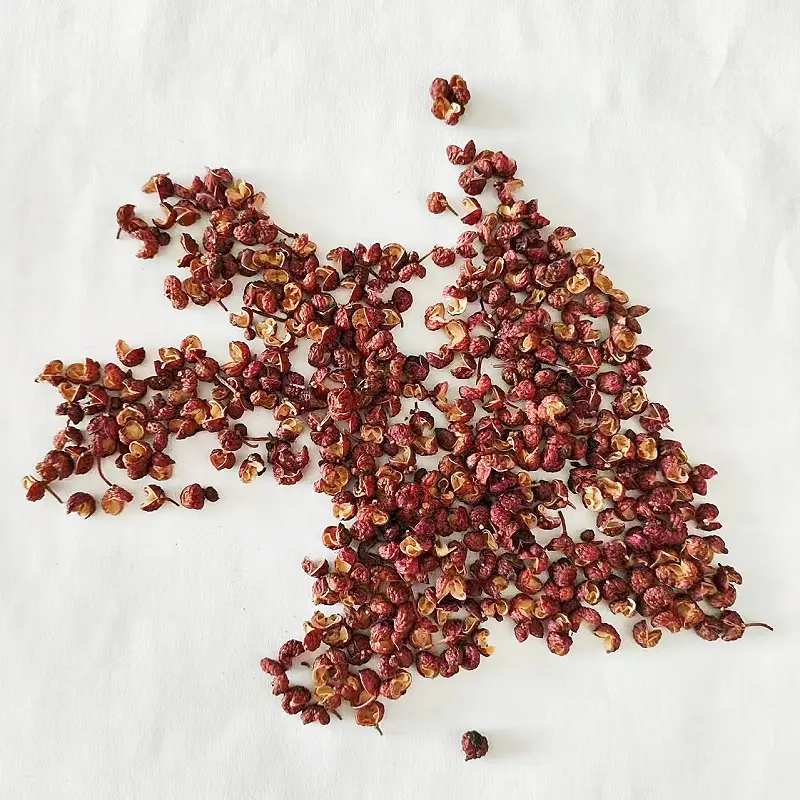
Sichuan Peppercorns and Other Spices
Sichuan red peppercorn is often compared to other spices due to its distinct flavor profile and culinary applications. Understanding its unique characteristics helps to appreciate its place in both traditional and contemporary cuisines.
1. Unique Flavor Profile
Sichuan red peppercorn is known for its unique flavor, which combines citrusy notes with a characteristic numbing sensation, referred to as "mala." This complex flavor profile sets it apart from other spices. For comparison:
Black Pepper: While black pepper offers a pungent, slightly spicy flavor, it lacks the citrus notes and numbing effects of Sichuan red peppercorn. Black pepper is often used as a general seasoning but does not provide the same depth of flavor in dishes that require a more intricate spice blend.
Cayenne Pepper: Cayenne is known for its heat and spiciness, but it does not possess the aromatic, citrus-like qualities of Sichuan pepper. Dishes that call for heat and spice may use cayenne, but they won’t achieve the same flavor complexity as those incorporating Sichuan red peppercorn.
Cumin: Cumin has a warm, earthy flavor, primarily used in Middle Eastern and Indian cuisines. It provides depth but lacks the numbing and citrus characteristics that Sichuan red peppercorn brings to dishes.
2. Culinary Applications
Sichuan red peppercorn's unique flavor allows it to shine in various culinary applications:
Sichuan Cuisine: It is a key ingredient in traditional Sichuan dishes such as hot pot, Mapo tofu, and Kung Pao chicken. The spice is often used in combination with chili peppers to create a signature "mala" flavor that defines many Sichuan dishes.
Infusions: Chefs often infuse oils or sauces with Sichuan red peppercorn to enhance dishes. For example, a Sichuan pepper oil can be drizzled over dumplings or used as a base for marinades, providing a complex layer of flavor.
Global Adaptation: The rise of fusion cuisine has led to the incorporation of Sichuan red peppercorn into non-traditional dishes. Chefs in various culinary cultures have begun using it in pasta sauces, seafood dishes, and even desserts, demonstrating its versatility.
3. Health Benefits as Flavoring Agents
While Sichuan red peppercorn adds unique flavor and aroma, it also brings health benefits to dishes. Spices like turmeric and ginger, while not directly comparable, are often used for their health properties. Turmeric, for instance, is known for its anti-inflammatory benefits, while ginger aids digestion.
Incorporating Sichuan red peppercorn into dishes can elevate not only the flavor but also the nutritional profile, providing a broader range of benefits compared to more traditional spices.
Sichuan red peppercorn stands out among spices due to its unique flavor profile and culinary versatility. While black pepper, cayenne, and cumin have their own distinct characteristics, none provide the same balance of citrusy notes and numbing effects that make Sichuan red peppercorn a favorite in many kitchens. Its ability to adapt to various culinary styles demonstrates its potential to enhance both traditional and contemporary dishes.
Best Ways to Grow Red Sichuan Peppercorns
Cultivating Sichuan red peppercorn requires careful attention to detail, from soil preparation to pest management. Here are the best practices for growing this unique spice successfully:
1. Selecting the Right Variety
When starting a Sichuan red peppercorn farm, choosing the right variety is crucial. Common varieties include:
Zanthoxylum bungeanum: This is the most popular variety, known for its aromatic qualities and vibrant red husks.
Zanthoxylum simulans: This variety is often used in culinary applications and is appreciated for its strong flavor profile.
Selecting seeds from reputable suppliers ensures a healthy start for your peppercorn plants.
2. Soil Preparation
Soil quality plays a significant role in successful cultivation. Here are best practices:
Soil Testing: Conduct a soil test to determine pH levels and nutrient content. Sichuan red peppercorn prefers slightly acidic to neutral soil (pH 6.0 to 7.0).
Organic Matter: Incorporate organic matter, such as compost or well-rotted manure, to improve soil structure and fertility.
3. Planting Techniques
Sichuan red peppercorn can be grown from seeds or seedlings. Best practices include:
Timing: Plant in the spring after the last frost when temperatures are consistently warm.
Spacing: Maintain adequate spacing (1-2 meters) between plants to promote airflow and reduce disease risk.
4. Irrigation and Water Management
Sichuan red peppercorn requires consistent moisture but is susceptible to root rot. Best practices for irrigation include:
Drip Irrigation: Utilize drip irrigation systems to provide consistent moisture while minimizing water on the foliage, reducing the risk of fungal diseases.
Mulching: Apply organic mulch around the base of plants to retain moisture and suppress weeds.
5. Pest and Disease Management
Integrated Pest Management (IPM) strategies are essential for controlling pests and diseases:
Regular Monitoring: Inspect plants frequently for signs of pests such as aphids, spider mites, and diseases like powdery mildew.
Natural Predators: Encourage beneficial insects, such as ladybugs and lacewings, to help control pest populations naturally.
Organic Pesticides: If infestations occur, opt for organic pesticides that are less harmful to the environment and beneficial insects.
6. Harvesting and Post-Harvest Processing
Knowing when and how to harvest Sichuan red peppercorn is vital for quality:
Harvest Timing: Harvest when approximately 70% of the husks have turned bright red. Late summer to early autumn is the optimal time for harvesting.
Drying: Post-harvest, dry the peppercorns in a well-ventilated area or using a dehydrator to prevent mold growth.
7. Continuous Education and Adaptation
Staying informed about best practices and innovations in spice cultivation is essential for success. Attend workshops, join agricultural cooperatives, and engage with fellow farmers to share knowledge and experiences.
Growing Sichuan red peppercorn can be a rewarding venture, offering unique flavors and health benefits. By following best practices in soil preparation, planting, irrigation, pest management, and harvesting, growers can maximize their yield and produce high-quality peppercorns. As a company committed to providing top-quality Sichuan red peppercorns, Weifang Manna Foods Co., Ltd. stands ready to support farmers and spice enthusiasts in their cultivation endeavors.

Best Cooking Methods to Bring Out The Flavor of Sichuan Peppercorns
Sichuan red peppercorn is celebrated not only for its unique numbing sensation but also for its complex flavor profile, which includes citrusy notes and earthy undertones. To fully appreciate and highlight these flavors in culinary applications, various techniques can be employed:
1. Dry Roasting
Dry roasting Sichuan red peppercorn enhances its aroma and intensifies its flavor. This technique is commonly used in Sichuan cuisine, where the peppercorns are toasted in a dry skillet over medium heat until they become fragrant.
Example: In a study published in the International Journal of Gastronomy and Food Science, researchers found that dry roasting spices, including Sichuan peppercorn, can significantly elevate their flavor compounds, making dishes more flavorful and aromatic. For instance, when preparing a classic Mapo tofu, adding freshly dry-roasted Sichuan peppercorn elevates the dish’s profile, contributing to its signature "mala" flavor.
2. Infusing Oils
Infusing oils with Sichuan red peppercorn is an excellent way to incorporate its flavor into a variety of dishes. To create Sichuan pepper oil, simply heat a neutral oil (like grapeseed or canola) and add crushed Sichuan red peppercorns. Allow the mixture to steep for several hours to extract the flavors.
Culinary Application: This infused oil can be used as a drizzle over dumplings, stir-fries, or salads, imparting the distinctive flavor of Sichuan peppercorn without overwhelming the dish. For instance, a chef might use this oil to finish a seafood dish, enhancing the natural flavors of the fish while adding a subtle heat.
3. Spice Blends and Marinades
Sichuan red peppercorn is often included in spice blends, such as five-spice powder or specialty blends for marinades. Combining it with other spices, such as star anise, cloves, and cumin, can create a complex flavor profile that enhances meats and vegetables.
Case Study: A restaurant in Chengdu, China, specializes in traditional Sichuan hot pot and uses a proprietary spice blend that includes Sichuan red peppercorn, garlic, and ginger. The blend not only flavors the broth but also tenderizes the meat, showcasing the spice's versatility.
4. Pickling and Brining
Sichuan red peppercorn can also be used in pickling and brining solutions to add depth and a unique kick to preserved vegetables. When included in brine, the peppercorns infuse their flavor into the vegetables, resulting in a delicious condiment.
Example: A popular dish among home cooks is pickled cucumbers with Sichuan peppercorn. The numbing heat complements the freshness of the cucumbers, creating a balanced flavor. A survey conducted by the Journal of Food Science noted that incorporating Sichuan peppercorn in pickling solutions increases consumer satisfaction due to its distinctive taste.
5. Pairing with Other Ingredients
To highlight the flavor of Sichuan red peppercorn, consider pairing it with complementary ingredients. Citrus fruits, such as lemon or lime, enhance its natural citrusy notes, while rich ingredients like pork and beef balance its numbing effect.
Culinary Exploration: A contemporary restaurant in New York uses Sichuan peppercorn in a lemon sauce for grilled chicken, showcasing the peppercorn's unique flavor profile. The combination of citrus and spice creates a refreshing and aromatic dish that has garnered positive reviews from food critics.
By employing culinary techniques such as dry roasting, oil infusion, creating spice blends, pickling, and thoughtful ingredient pairing, cooks can effectively highlight the flavor of Sichuan red peppercorn. These methods not only enhance the culinary experience but also contribute to the growing popularity of this unique spice in kitchens worldwide.
Identifying High-quality Sichuan Red Peppercorns
Identifying high-quality Sichuan red peppercorn is crucial for both culinary enthusiasts and professional chefs. Here are several factors to consider when selecting the best Sichuan red peppercorn:
1. Visual Inspection
The first step in identifying quality Sichuan red peppercorn is to conduct a visual inspection. High-quality peppercorns should be vibrant red, indicating freshness and proper harvesting techniques.
Quality Indicator: According to a study published in the International Journal of Food Science and Technology, the color of Sichuan peppercorn correlates with its flavor and aroma. Dull or faded colors may indicate age or poor handling, leading to a less potent spice.
2. Aroma
Fresh Sichuan red peppercorn should have a strong, fragrant aroma with citrusy and floral notes. A lack of aroma can be a sign that the peppercorns are old or improperly stored.
Aromatic Evaluation: A chef in a gourmet restaurant emphasized the importance of aroma in assessing peppercorn quality. They noted that high-quality Sichuan red peppercorn could significantly enhance dishes, while lower-quality peppercorns lacked the depth of flavor necessary for authentic Sichuan cuisine.
3. Texture
When selecting Sichuan red peppercorn, consider the texture of the spice. Quality peppercorns should feel firm and slightly crunchy when crushed. If they are too soft or shriveled, they may be stale or of inferior quality.
Consumer Insights: A survey conducted by the Journal of Culinary Science & Technology found that consumers often prioritize texture when selecting spices. Quality peppercorns provide a satisfying crunch that enhances the overall sensory experience in cooking.
4. Packaging and Storage
Examine the packaging of Sichuan red peppercorn. Quality spices are typically sold in airtight containers that protect them from light and moisture. Packaging labeled with production and expiration dates is essential for ensuring freshness.
Case Study: A spice company based in Sichuan has implemented strict packaging standards to maintain the quality of their products. Their use of vacuum-sealed bags has helped preserve the freshness of their Sichuan red peppercorn, leading to positive feedback from customers regarding flavor and aroma.
5. Source and Certification
Choosing Sichuan red peppercorn from reputable sources can also indicate quality. Look for suppliers that provide information about their sourcing practices and quality certifications, such as FDA or HACCP certifications.
Industry Standards: A report from the Food Quality Assurance Journal highlights the importance of sourcing spices from certified suppliers to ensure safety and quality. Suppliers who adhere to strict quality control measures are more likely to provide high-quality Sichuan red peppercorn.
Identifying high-quality Sichuan red peppercorn involves a careful assessment of visual appearance, aroma, texture, packaging, and source. By following these guidelines, consumers can select the best peppercorns to enhance their culinary creations and enjoy the unique flavors that this spice has to offer.
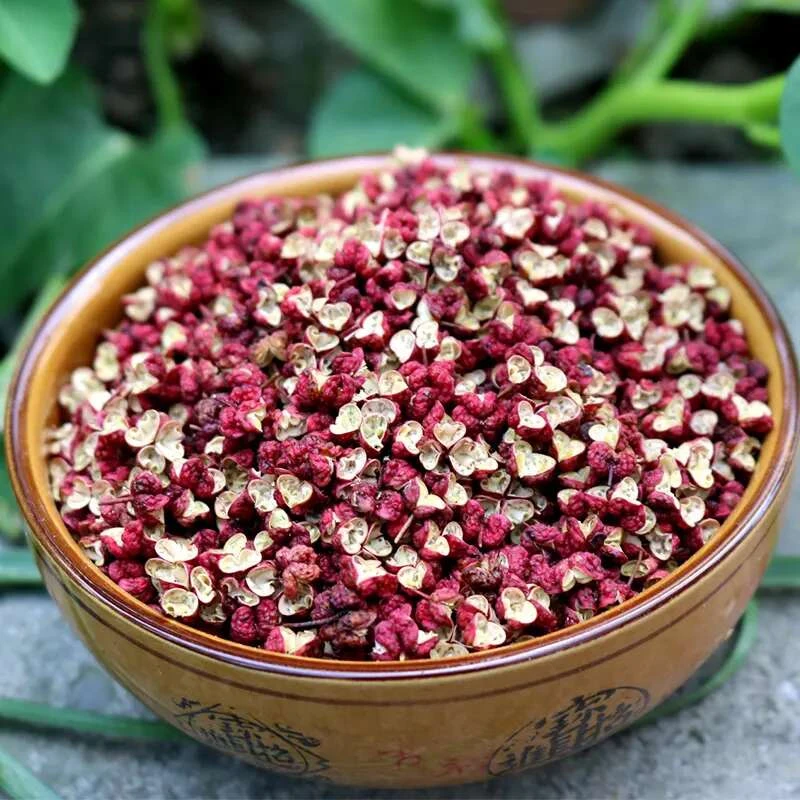
Promoting Weifang Manna Foods Co., Ltd.
At Weifang Manna Foods Co., Ltd., we are committed to providing high-quality Sichuan peppercorns and a variety of spices to customers worldwide. Our own spice factory ensures that we can meet the diverse needs of our clients, processing spices according to specific requirements.
We specialize in:
Sichuan Peppercorns: Our range includes red and green Sichuan peppercorns, known for their superior flavor and aroma.
Quality Assurance: We are registered with the industrial and commercial department, holding certifications such as FDA and HACCP. Our processing workshops meet strict quality standards, ensuring that our spices are safe and high-quality.
Global Reach: Our products are exported to the United States, Japan, Canada, Europe, the Middle East, Taiwan, and other regions, making us a reliable partner in the spice industry.
Why Choose Us?
Expertise: With years of experience in the spice industry, we understand the needs of our customers and strive to deliver exceptional products.
Custom Processing: We offer customized processing of spices to meet your specific needs, ensuring that you receive exactly what you want.
Commitment to Quality: Our state-of-the-art processing equipment and strict pesticide control guarantee the highest quality in every batch of spices.
Conclusion
Sichuan red peppercorn is a fascinating spice that brings unique flavors and health benefits to your dishes. By understanding the cultivation process, you can appreciate the effort that goes into growing this remarkable ingredient. At Weifang Manna Foods Co., Ltd., we are dedicated to providing top-quality Sichuan peppercorns and spices to customers around the world. Contact us today to learn more about our products and how we can support your culinary adventures!

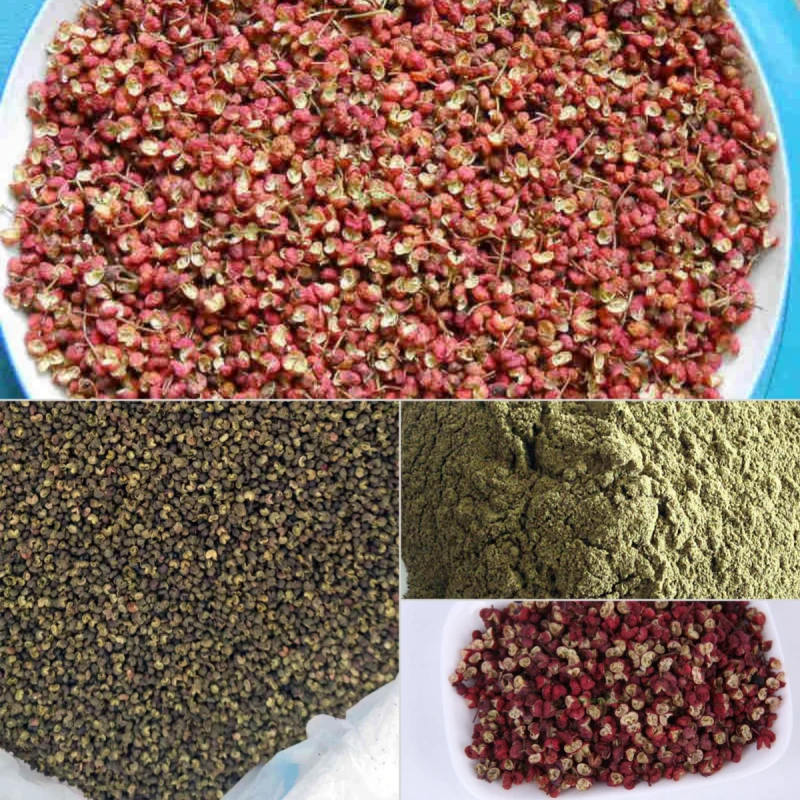
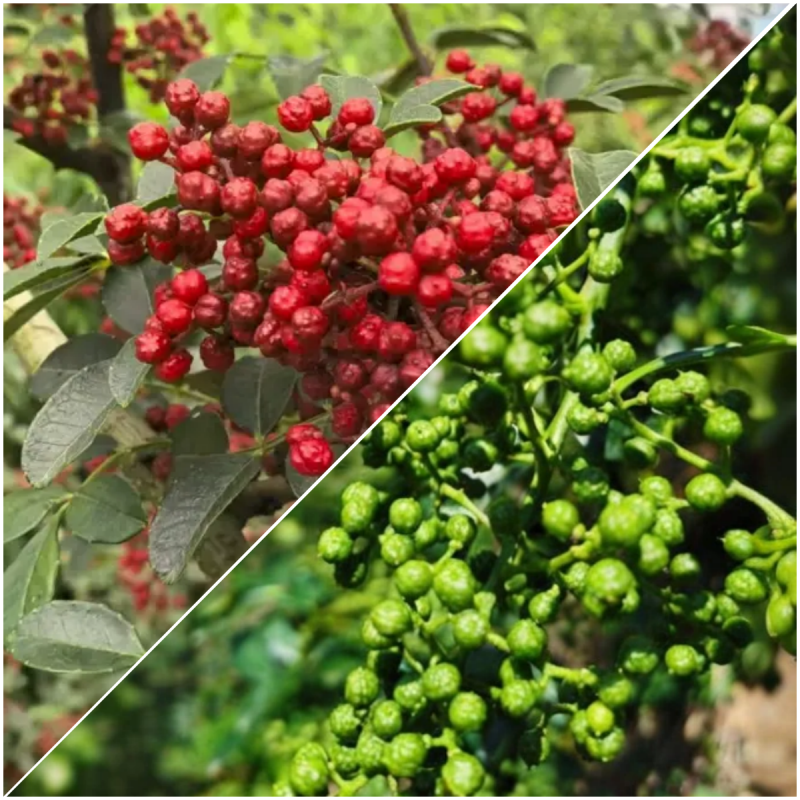
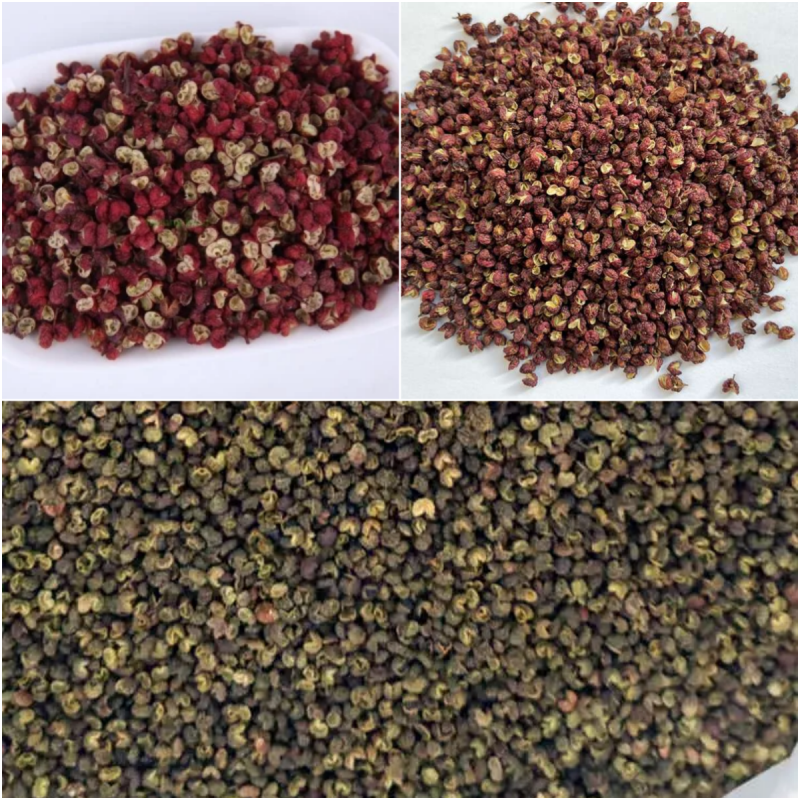
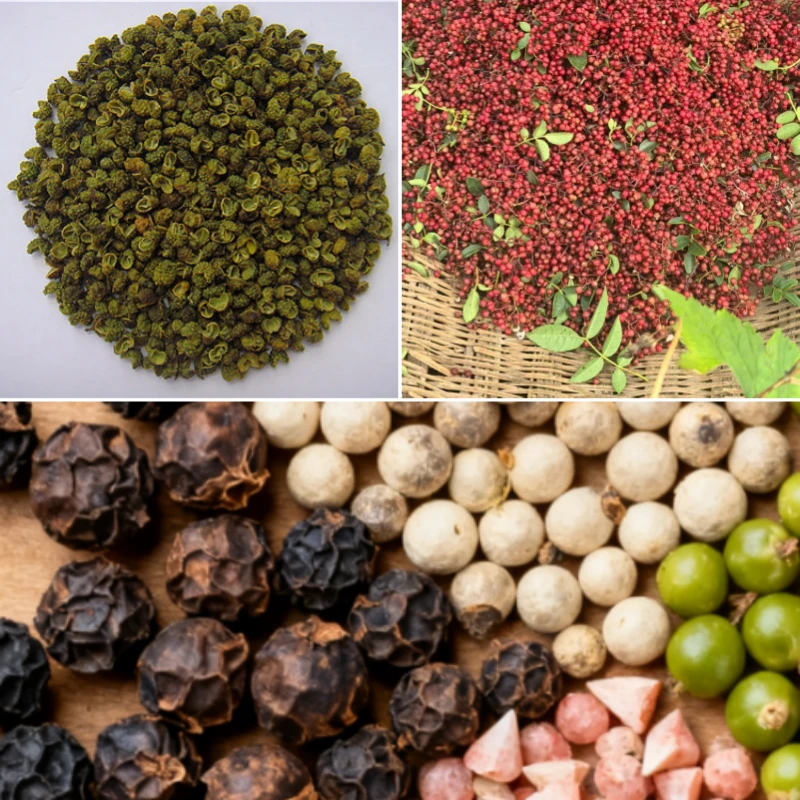
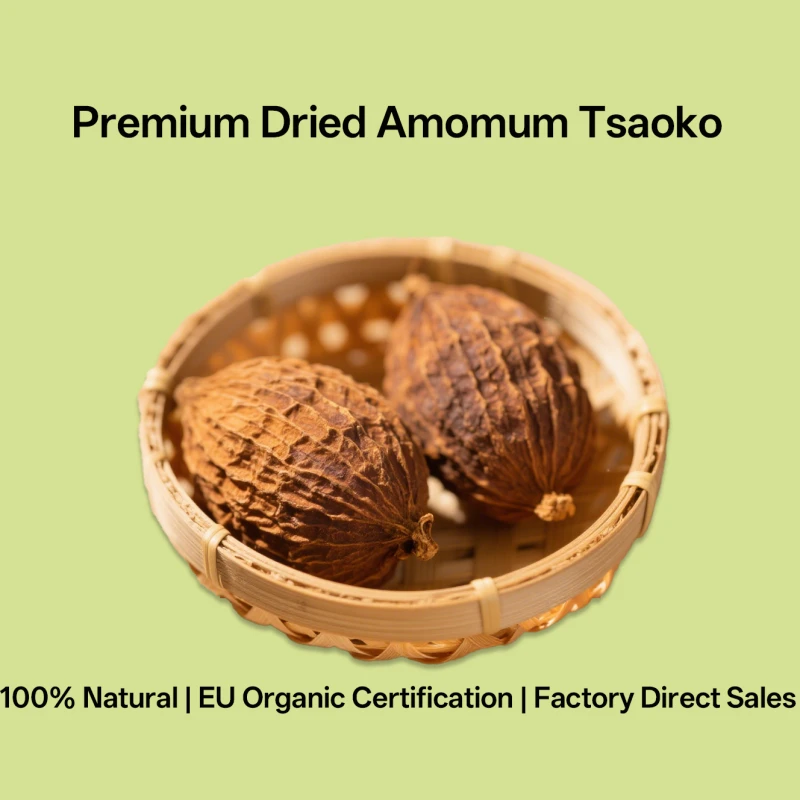

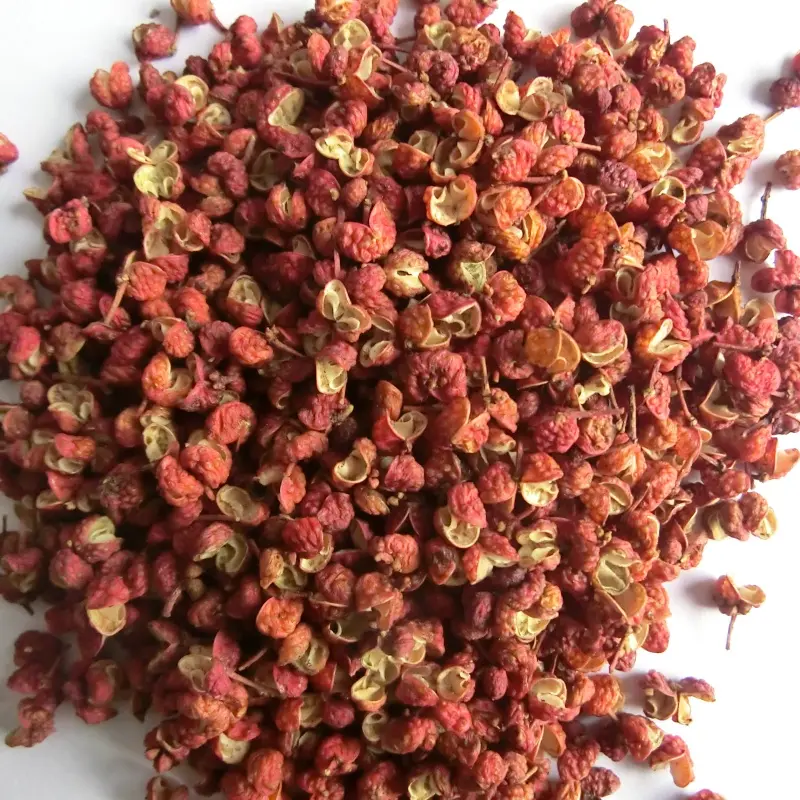
811.webp)

